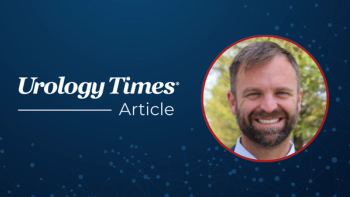
Hypofractionated vs. conventional RT: How outcomes, safety compare
A recent study comparing 8 weeks of conventional radiation therapy with hypofractionated RT over 4 weeks appears to have practice-changing implications for men with intermediate-risk prostate cancer.
Researchers report in a new
Read:
Dr. CattonUrologists should, therefore, consider the shorter RT course when treating these patients because of potential patient and health system benefits, according to the study’s lead author, Charles N. Catton, MD, of the Princess Margaret Cancer Centre and the University of Toronto.
For the study, which was presented at the American Society of Clinical Oncology annual meeting in Chicago, Dr. Catton and co-authors studied 1,206 men from 27 sites in Canada, Australia, and France. All subjects had intermediate-risk prostate cancer (T1-2 Gleason 6 and PSA 10-20 ng/mL or T2b-c Gleason 6 and PSA <20 ng/mL or T1-2 Gleason 7 and PSA < 20 ng/mL) and were randomized to either conventional RT, at 78 Gy in 39 fractions over 8 weeks, or hypofractionated RT, at 60 Gy in 20 fractions over 4 weeks, without hormone therapy.
More on Prostate Cancer:
In an average 6-year follow-up, they found 166 patients receiving hypofractionated RT had biochemical-clinical failure compared to 170 in the conventional arm. The biochemical-clinical failure rate was 21% at 5 years in both study groups.
According to Dr. Catton, urologists should take note of these results because the study addresses an important issue among many patients, which is: What is the best way to receive radiotherapy?
Read:
“And because we have looked at a group of men quite commonly treated with radiotherapy for intermediate-risk prostate cancer, it potentially impacts a large segment of the population being treated for prostate cancer,” Dr. Catton told Urology Times.
Until now, patients didn’t have the option of hypofractionated RT because it wasn’t proven to be safe and effective, he said.
“Our goal was not to look at ways of improving the outcomes of treatment. We wanted to be able to provide similar outcomes as with 8 weeks of treatment to compressing the treatment to 4 weeks-so, essentially halving the time that the patient is on treatment,” Dr. Catton says. “This is obviously a benefit to the patient coming in for treatment every day, 5 days a week for 8 weeks. Suddenly, we’re able to do that in 4 weeks. It’s much more convenient. It has positive economic impact for the patient-less traveling, less cost, less time off work. And for the health care system, you can treat twice as many patients with the same amount of equipment.”
Increased toxicity with the shorter course was the researchers’ biggest concern, according to Dr. Catton. But that didn’t turn out to be the case.
Also see:
“Other studies have in fact resulted in worse side effects for these more intensive treatments,” Dr. Catton said. “We spent a lot of effort on the radiation treatment technique to make sure that it was done in the best possible way and to monitor the various centers to make sure they were delivering the treatment the way it was intended, and this seems to have paid off with very favorable side effects.”
This study is strong enough to change RT practice for men with intermediate-risk prostate cancer. Whether the shorter course might be as good for men with more aggressive cancers is the subject of ongoing studies, he said.
Have you read:
“There are two important results. One is that 4 weeks of treatment can be given safely; our side effects for both bowel and bladder radiation-related toxicities was not worse and in fact for the long-term side effects, it was slightly better with the short-course radiation,” Dr. Catton said. “In terms of cancer outcomes, we did not see any worse outcomes with 4 weeks of radiation. So, for both aspects, cancer control and side effects, 4 weeks of treatment is a perfectly reasonable alternative [to 8 weeks of radiation therapy].”
Dr. Catton has received honoraria from Abbvie, Bayer, Ferring, Janssen, and Sanofi, and is a consultant/adviser to Abbvie. Several of his co-authors have a financial or other relationship with pharmaceutical companies.
More from Urology Times:
Newsletter
Stay current with the latest urology news and practice-changing insights — sign up now for the essential updates every urologist needs.


















